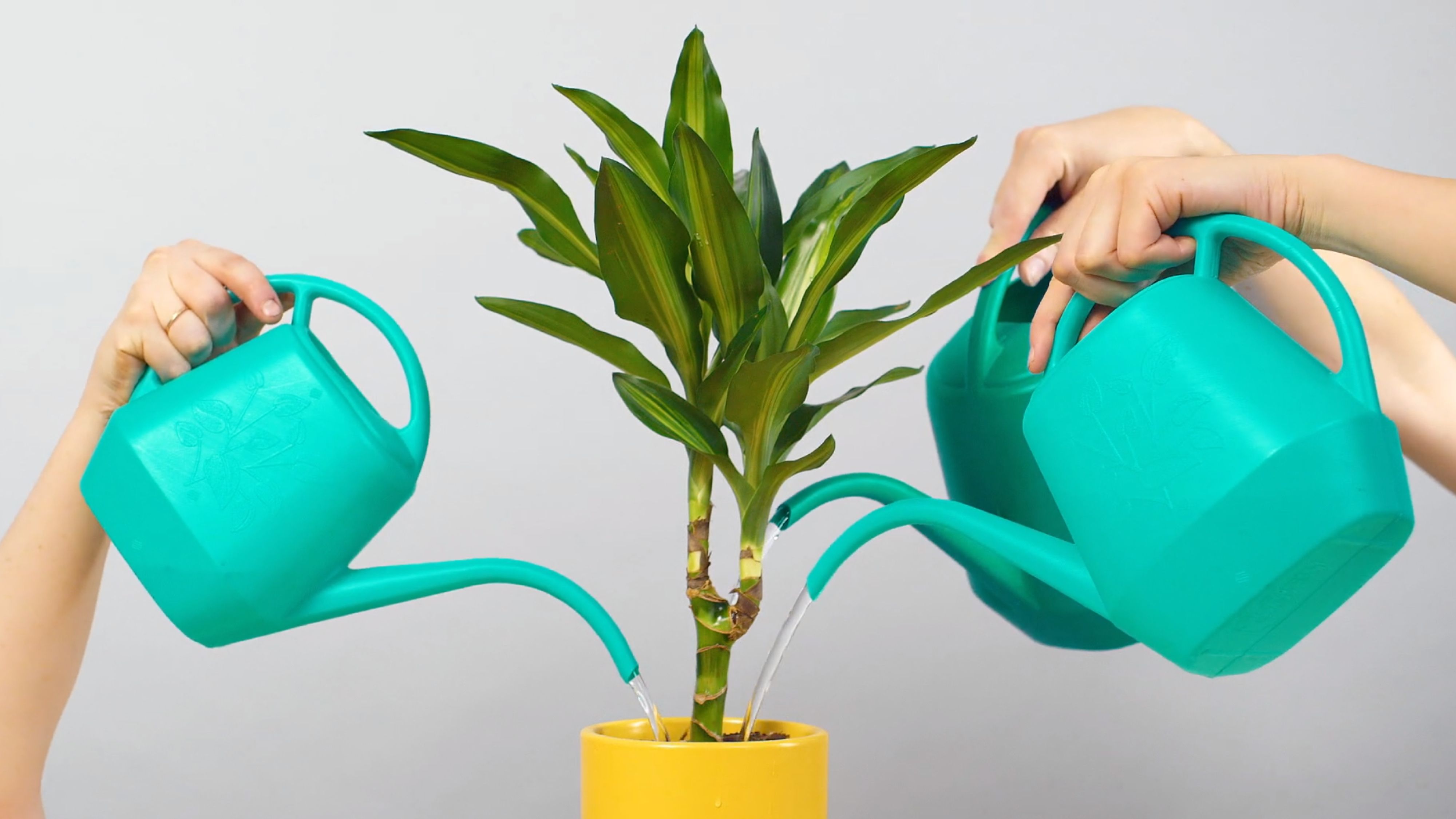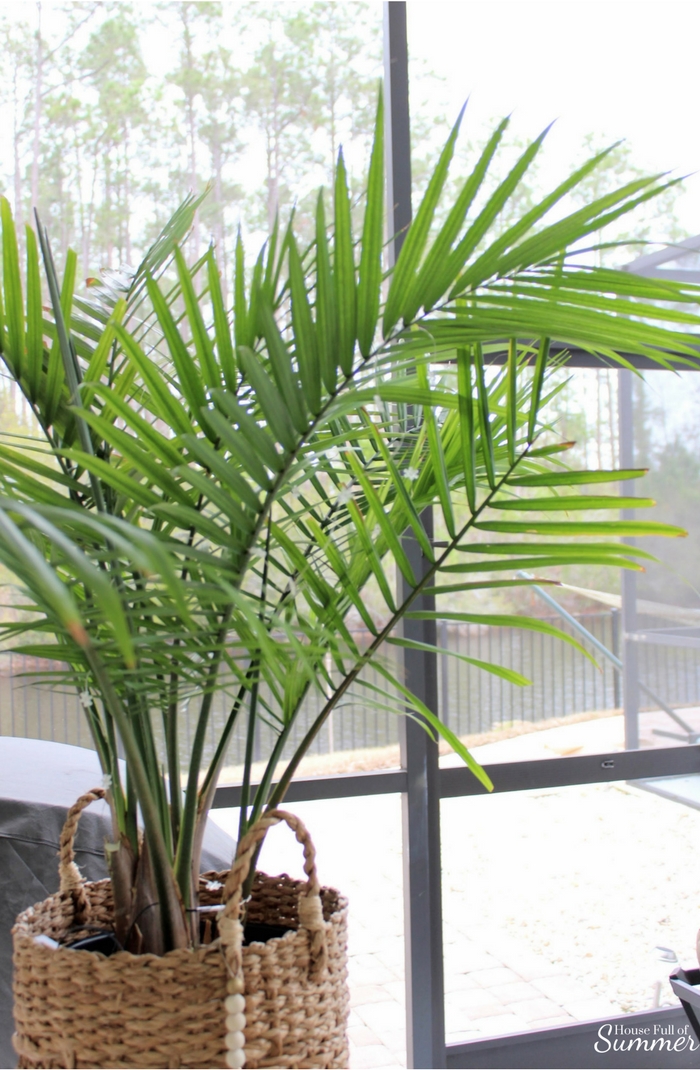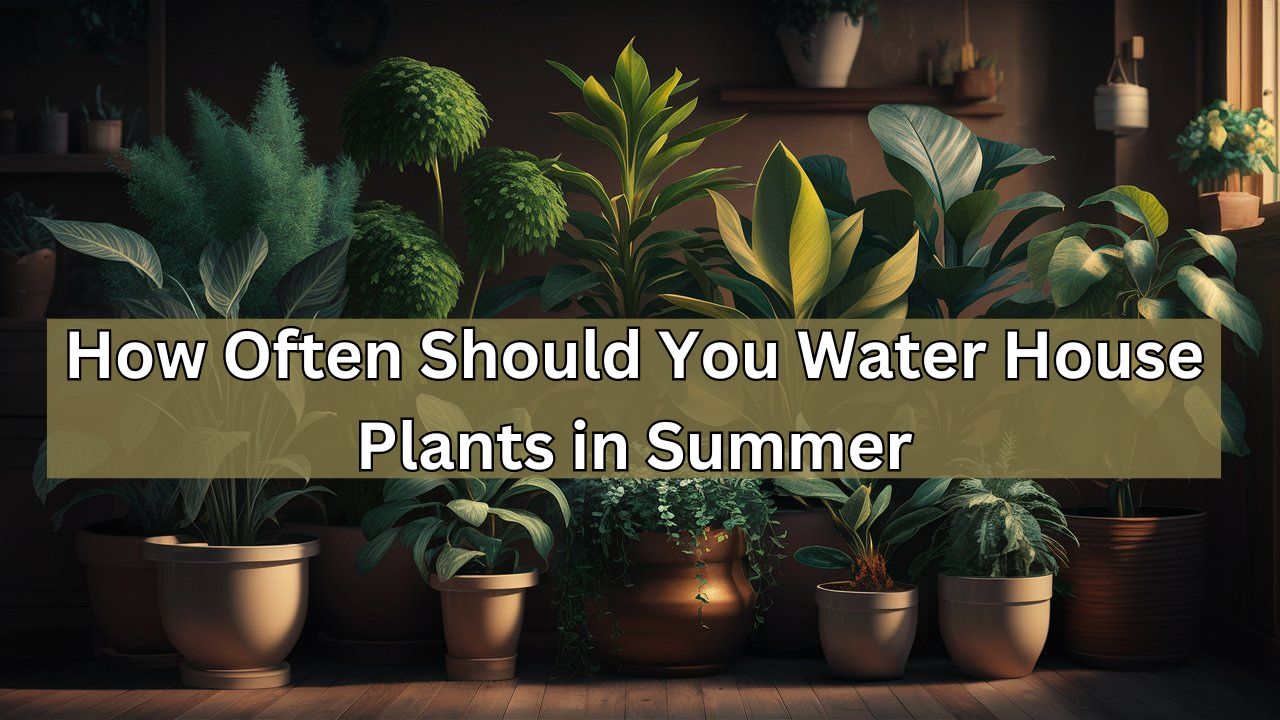Water house plants every 2-3 days in summer. Adjust based on plant type, size, and indoor conditions.
House plants need more attention in summer due to higher temperatures and increased sunlight. Proper watering is crucial to keep them healthy and vibrant. Overwatering or underwatering can harm plants, leading to yellowing leaves or root rot. Observe your plants’ needs and adjust watering schedules accordingly.
Factors like pot size, soil type, and humidity levels influence watering frequency. Ensure good drainage to prevent waterlogging. Consistent care during summer helps house plants thrive, adding beauty and freshness to your indoor space. Regularly check soil moisture and adapt watering habits to maintain optimal plant health.
Watering Frequency
Understanding the watering frequency for house plants in summer is essential. The heat and increased sunlight affect how quickly soil dries out. Here, we break down the watering needs into a daily and weekly schedule.
Daily Needs
Some plants need daily attention in summer. These plants usually have smaller pots or are placed in direct sunlight. Check the soil’s top inch daily. If it’s dry, water the plant.
- Check soil moisture every morning.
- Use a moisture meter for accuracy.
- Water until it drains from the bottom.

Credit: www.thesill.com
Weekly Schedule
Other plants have a more flexible schedule. They might only need watering once or twice a week. This usually applies to larger pots or plants in shaded areas.
- Monitor soil moisture every few days.
- Water when the top 2 inches feel dry.
- Ensure the water reaches the roots.
A balanced schedule ensures that your plants stay healthy. Adjust based on your specific plant type and environment.
| Plant Type | Watering Frequency |
|---|---|
| Succulents | Once a week |
| Ferns | Twice a week |
| Herbs | Daily |
Plant Types
Different plants have different watering needs, especially in summer. Understanding your plant’s type helps ensure they thrive. Here, we focus on two common types: succulents and tropical plants.
Succulents
Succulents store water in their leaves and stems. They need less frequent watering. Too much water can cause root rot.
- Water once every two weeks.
- Ensure the soil is dry before watering again.
- Use well-draining soil to prevent waterlogging.
Place succulents in bright, indirect light. Direct sunlight can scorch their leaves.
Tropical Plants
Tropical plants love humidity and frequent watering. They thrive in moist soil but not soggy.
- Water every 3-4 days.
- Mist leaves to increase humidity.
- Ensure pots have drainage holes to avoid waterlogging.
Place tropical plants in bright, indirect light. Avoid direct sunlight to prevent leaf burn.
| Plant Type | Watering Frequency | Light Requirement |
|---|---|---|
| Succulents | Every 2 weeks | Bright, indirect light |
| Tropical Plants | Every 3-4 days | Bright, indirect light |
Knowing your plant type is key to proper watering. This ensures healthy, thriving plants.
Soil Considerations
Understanding soil considerations is key to watering house plants in summer. The right soil can retain moisture and provide proper drainage. This balance helps plants thrive even during hot months. Let’s explore some crucial aspects of soil for house plants.
Drainage Importance
Proper drainage prevents root rot and keeps plants healthy. Ensure your pots have drainage holes. If water cannot escape, roots will suffocate. Use soil that allows water to flow through easily.
- Perlite
- Sand
- Pumice
These materials improve drainage in the soil mix. Adding them can save your plants from overwatering issues.
Moisture Retention
Moisture retention keeps plants hydrated longer. Good soil holds water but still drains excess. This balance is essential in hot weather. Use materials that help soil retain moisture.
| Material | Benefit |
|---|---|
| Coco coir | Retains water well |
| Peat moss | Holds moisture |
| Vermiculite | Improves moisture retention |
Mixing these into your soil can help keep plants hydrated. Choose the right blend for your plant’s needs.

Credit: www.housefullofsummer.com
Signs Of Overwatering
| Sign | Description |
| Yellow Leaves | Leaves turn yellow from too much water |
| Root Rot | Roots turn brown or black and smell bad |
Signs Of Underwatering
Underwatering house plants in summer can be a common problem. It’s crucial to recognize the signs of underwatering to keep your plants healthy. Below are the key indicators to watch for.
Wilting
Wilting is one of the first signs your plant needs water. Leaves may droop or hang down. They can appear lifeless and lack their usual firmness.
- Leaves lose their vibrant color.
- Plants look tired and unhealthy.
Always check if wilting is due to underwatering. Sometimes, overwatering can cause similar symptoms.
Dry Soil
Dry soil is another clear sign. Touch the soil to see if it feels dry. If it’s dry, the plant needs water.
| Soil Condition | Action Needed |
|---|---|
| Dry and Cracked | Water immediately |
| Moist | No action needed |
Dry soil can also become hard and compact. This makes it harder for water to reach the roots. Ensure soil remains consistently moist but not soggy.
Watering Techniques
Watering house plants in summer can be tricky. Different plants need different watering techniques to thrive. Below, we discuss two important techniques to keep your plants healthy and happy.
Bottom Watering
Bottom watering is a method where water is absorbed from the bottom up. This ensures that the roots get enough moisture without the risk of overwatering.
- Fill a tray with water.
- Place the plant pot in the tray.
- Leave it for 15-20 minutes.
- Remove the pot and let it drain.
This technique prevents root rot. It is especially useful for plants that hate wet leaves.
Misting
Misting involves spraying water onto the leaves. This method increases humidity around the plant.
- Fill a spray bottle with water.
- Spray the leaves until they are damp.
- Repeat this process daily in dry climates.
Misting is great for tropical plants. It helps them feel at home by mimicking their natural environment.
| Technique | Benefits |
|---|---|
| Bottom Watering | Prevents root rot, ensures roots are watered. |
| Misting | Increases humidity, good for tropical plants. |
Environmental Factors
Understanding the environmental factors affecting your house plants is essential for proper watering. During summer, the needs of your plants change due to varying conditions. Let’s dive into the most significant factors: humidity levels and sunlight exposure.
Humidity Levels
Humidity levels play a crucial role in your plant’s water needs. In summer, indoor air can become dry due to air conditioning. Dry air can increase a plant’s water loss through its leaves. It’s important to monitor indoor humidity and adjust your watering schedule accordingly.
Consider using a humidity meter to track the moisture in the air. Most house plants thrive in humidity levels between 40-60%. If the levels drop below 40%, you may need to water more frequently. Here are some tips to maintain humidity:
- Use a humidifier in the room.
- Place a tray of water near your plants.
- Mist your plants with water daily.
Sunlight Exposure
Sunlight exposure directly affects your plant’s water needs. In summer, days are longer, and sunlight is more intense. Plants in direct sunlight will need more frequent watering. Ensure you know the light requirements of each plant.
Create a table to track each plant’s sunlight needs:
| Plant Type | Sunlight Needs | Watering Frequency |
|---|---|---|
| Succulents | Full Sun | Once a Week |
| Ferns | Indirect Light | Twice a Week |
| Peace Lily | Low Light | Three Times a Week |
Monitor the soil moisture regularly. Insert your finger about an inch into the soil. If it feels dry, it’s time to water.
Adjust your watering schedule based on these environmental factors. Your house plants will flourish with the right care.
:strip_icc()/how-to-water-houseplants-5651236-primary-3aa1e5b5021640ee96184b6755caa964.jpg)
Credit: www.bhg.com
Expert Tips
Expert tips can help you water house plants properly in summer. Your plants need extra care during the warm months. Follow these guidelines to ensure they thrive.
Consistent Routine
Developing a consistent watering routine is crucial. Water your plants at the same time each day. This helps them adapt to a predictable schedule.
Morning is the best time to water your house plants. The soil can absorb moisture before the heat of the day. Ensure the water reaches the roots properly.
Observe your plants regularly. Check if the soil is dry or wet. Use your finger to feel the top inch of soil. If it is dry, it is time to water.
Here is a simple table to guide you:
| Plant Type | Watering Frequency |
|---|---|
| Succulents | Once a week |
| Ferns | Every 2-3 days |
| Flowering Plants | Every 2 days |
Adjusting For Plant Growth
As plants grow, their watering needs change. Young plants need less water than mature ones. Larger plants have bigger root systems. They require more water.
Repotting plants can affect watering schedules. New pots might have different drainage. Adjust your routine based on the new pot size.
Check plant leaves for signs of water stress. Wilting or yellowing leaves mean your plant needs more water. Adjust your schedule accordingly.
Follow these tips and your house plants will flourish all summer long.
Frequently Asked Questions
How Often Should I Water Indoor House Plants?
Water indoor house plants every 1-2 weeks. Check soil moisture first. Adjust frequency based on plant type and environment.
Do You Need To Water Plants Everyday In Summer?
No, you don’t need to water plants every day in summer. Water deeply 2-3 times a week instead. Ensure soil stays moist but not soggy.
How To Tell If Potted Plants Need Water?
Check the soil moisture by inserting your finger 1-2 inches deep. If it feels dry, water the plant. Drooping leaves can also indicate thirst.
How Often Should I Water My Potted Plants In Hot Weather?
Water potted plants daily in hot weather. Ensure soil stays moist but not waterlogged. Check soil moisture regularly.
Conclusion
Watering house plants in summer requires attention and care. Check soil moisture regularly to avoid over or under-watering. Adjust frequency based on plant type and environment. Consistent, proper watering will keep your house plants healthy and thriving during the hot summer months.
Happy gardening!

My mission is to help you bring the beauty of nature indoors with expert advice, detailed plant care guides, and creative design ideas.




